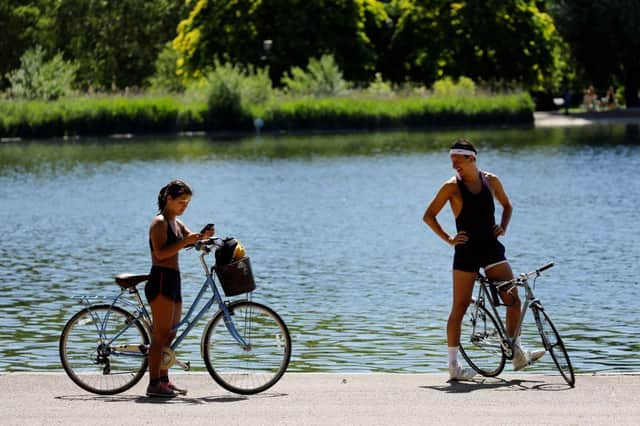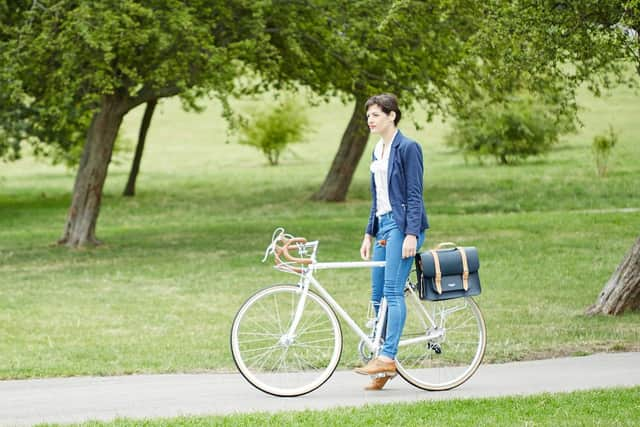All you need to know about getting back on your bike
This article contains affiliate links. We may earn a small commission on items purchased through this article, but that does not affect our editorial judgement.


With massive numbers of people cycling during lockdown for their daily exercise, followed by people eschewing public transport in favour of a bike when commuting to work.
And the numbers are likely to increase further as the government is investing heavily in cycling infrastructure, as well as recently offering the £50 bike service voucher scheme to encourage people to get back in the saddle and get fitter.
Advertisement
Hide AdAdvertisement
Hide AdIf you are still sitting longingly on the sidelines, here is what I believe you need to know to get yourself saddle ready and back on your bike:


THE BIKE
If you have an old bike, dust it off, check the brakes and the gears are working properly and enjoy it. Getting on the bike is the only way to know what kind of cycling you enjoy.
If you’re buying a new bike, first consider the kind of riding you want to do and the typical route. If it’s hilly – make sure you get a bike with enough gears to handle it, if you’re commuting then 3-6 gears should be enough to get you up and down most town and city hills. If looking to road or mountain bike you’ll want to consider more than 10 gears to manage the rougher terrain.
Next, consider the weight of the bike. Modern road bikes are all designed to be very light so even the heaviest will do you well – but aim to go as light as possible. For commuter bikes, the weight can be an issue. The heavier Dutch-style bikes often look very beautiful but they are hard work if you’re peddling uphill, lifting it up canal path stairs or storing it in your flat. So factor in the weight of the bike if you have a lot of hills to conquer or you need to store it inside.
THE SEAT POSITION
Advertisement
Hide AdAdvertisement
Hide AdI often see cyclists around with a bad seat position set up – usually the seat is far too low, so they’re overworking and are putting unnecessary strain on their knees. To set up your bike properly, this is the simplest way – The Heel to Pedal method:
*Sit on the bike while holding onto a wall or chair for stability.
*Place your heel on the pedal and pedal back to 6 o’clock position. Your knee should be completely straight.
*Increase the height of your saddle until it is straight; that is your perfect position.
Advertisement
Hide AdAdvertisement
Hide Ad*If you’re just cycling around town the first time and aren’t 100% confident on the bike, it’s a good idea to lower it from this position ever so slightly. This will make it is easier to put your foot on the ground when you want to stop. Once you’re happy in the saddle you can lift it back up to the correct height.
THE ROUTE
The number one thing I get asked when I mention that I have been an urban cyclist for 15 years is; “aren’t you scared of the traffic?” I’m not. But that’s because I always pick my route carefully – even now.
The route is crucial to an enjoyable journey. The main highways and roads might be the most direct path but they will not be the most pleasant. Always take the backstreets; they are quieter, safer and much more interesting as you get to discover parts of your town/city you would never have seen before.
Fortunately, picking your route has never been easier. There are lots of cycle routes now across the country and they are definitely worth taking advantage of. Most city routes are in cycle maps that are easy to follow. For your local paths have a look on your council’s website – most of the maps are available there.
Advertisement
Hide AdAdvertisement
Hide AdTry looking here: https://www.doncaster.gov.uk/services/transport-streets-parking/cycling#cyclenetwork
And if you are getting out of town – the best resource is Sustrans, which has cycle-friendly, and cycle-only routes across the UK.
Give yourself an extra 15 minutes to cycle, take the slightly longer, quieter route, get yourself lost and, most importantly of all, enjoy it.
FREE YOUR BACK
Getting the bag off your back and onto the bike is a real joy. It takes the strain off your spine and also reduces back sweat – something a backpack seems to create in very un-natural quantities. The solution is a pannier rack.
Advertisement
Hide AdAdvertisement
Hide AdThey attach over the back wheel of your bike and you can attach pannier bags and baskets on them to carry whatever you need. As the rack is on the back of your bike, not the front, and is low on the bike, it doesn’t affect your steering or stability, so they will help you feel more secure on your bike.
BUILD CONFIDENCE
If you still want a bit more Dutch courage (so to speak) before cycling on your own, then you need your own personal peloton (cycling group). Cycling is really friendly, with lots of groups keen to help other cyclists get started with advice, buddies and supported rides. There are groups all over the country, so you’ll definitely find one in your local area.
The Breeze network offers women’s only rides and commuting training rides to help build confidence for cycling to work and British Cycling has beginners guide on their website for the A-Z of what you need to know before taking to the saddle. Most importantly, don’t rush your cycling. Enjoy it. Life from the saddle should always make you smile.
ABOUT THE AUTHOR
Catherine Ellis is founder of Hill & Ellis, which produces a range of high quality, stylish cycle bags. Each bag, designed in the UK, is created to transition perfectly from home to bike to boardroom to bar. They are functional, fashionable and hard wearing. There’s plenty of space inside for a laptop and other essentials, and each bag comes with patented pannier clips that fit almost any bike, allowing you to clip the bag on and off quickly and easily.
Web: www.hillandellis.com
Twitter: @hillandellis
Facebook: https://www.facebook.com/HillEllis/
Instagram: @hillandellis